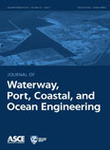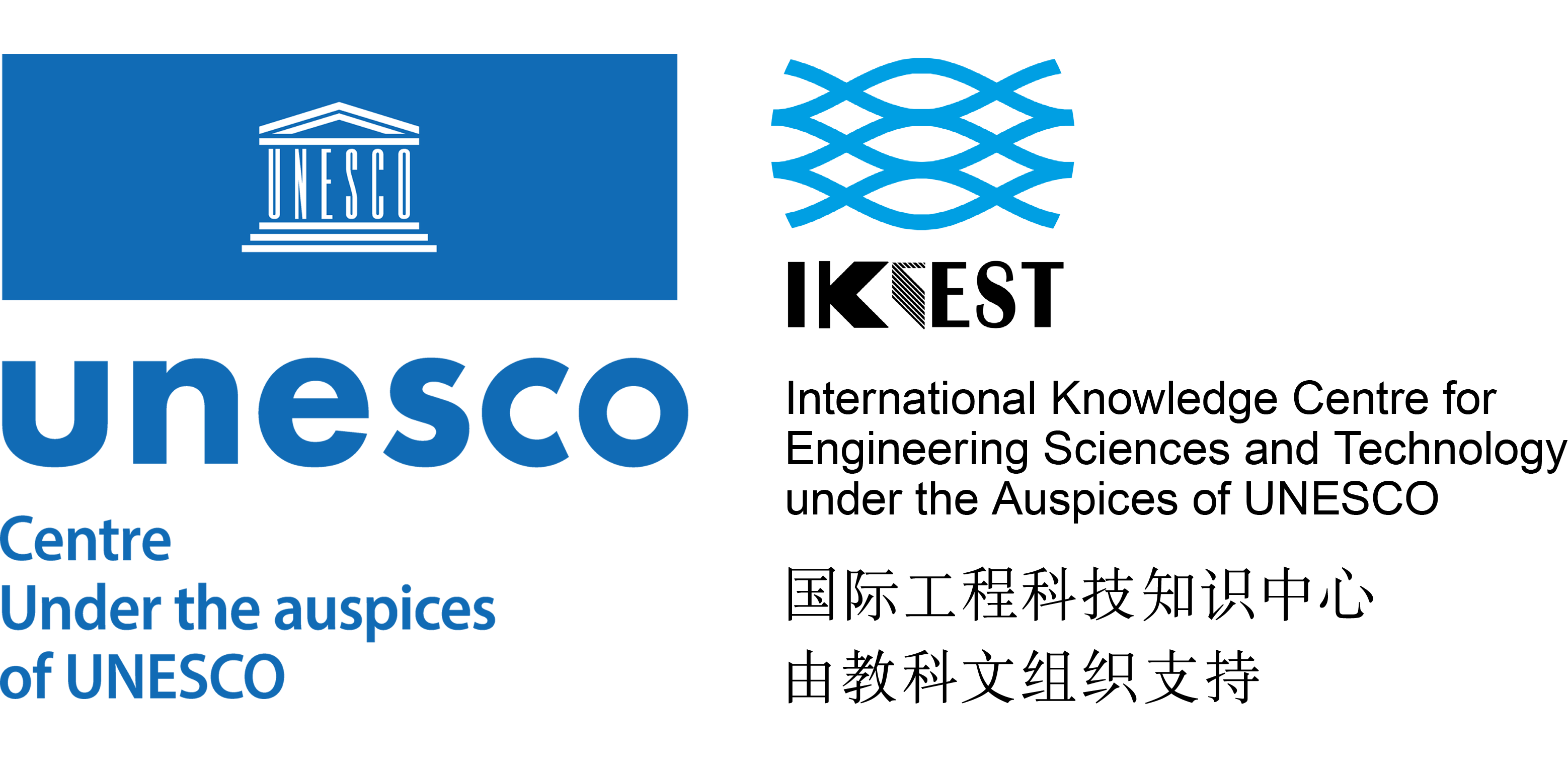Journal


Journal of Waterway, Port, Coastal, and Ocean Engineering
Archives Papers: 160
The American Society of Civil Engineers
Please choose volume & issue:
-
Analysis Method of Terminal Throughput Capacity for Coal Export Terminals
Abstracts:Considering the limitations of previous calculation methods for the throughput capacity of coal export terminals, this paper proposes a new analysis method for terminal throughput capacity on the basis of a computer simulation model. The simulation analysis model was built considering many certain factors, such as terminal layout, a loading and unloading process scheme, equipment efficiency, and several uncertain parameters, such as the frequency of ships to the terminal, frequency of trains going to the terminal, and shiploads. The simulation model has two characteristics. First, to describe the status of it more accurately in the model, a coal stockyard was divided into small grids. Second, two logical structures for the model are proposed in this paper: the train arrival plan that was informed by the ship arrival plan, and the ship arrival plan and the train arrival plan, which are independent of each other. Applying the simulation model to a coal terminal shows that the error between the calculation results and the actual throughput is very small, thus verifying the accuracy of the analysis method. The model can be used not only to calculate the throughput capacity of a coal export terminal but also to analyze capacity changes for varying storage times, shiploads, and frequencies of ships going to the terminal.
-
Validation of Container Ship Squat Modeling Using Full-Scale Trials at the Port of Fremantle
Abstracts:In this paper, selected results are presented from a set of recent full-scale trials measuring the dynamic sinkage, trim, and heel of 16 container ship transits entering and leaving the Port of Fremantle, Western Australia. Measurements were made using high-accuracy Global Navigation Satellite System (GNSS) receivers and a fixed reference station. The measured dynamic sinkage, trim, and heel of three example container ship transits are discussed in detail. Maximum dynamic sinkage and dynamic draught, as well as elevations of the ship’s keel relative to chart datum, are calculated. A theoretical method using slender-body shallow-water theory is applied to calculate sinkage and trim for the transits. It is shown that the theory is able to predict ship squat (steady sinkage and trim) with reasonable accuracy for container ships at full scale in open dredged channels. In future work, the measured ship motions, along with full measured wave time series data, will be used for validating wave-induced motion software.
-
Laboratory Study on Erosion of Vegetated HPTRM System under High-Speed Open-Channel Flow
Abstracts:High-performance turf reinforcement mat (HPTRM) is a technology to strengthen the vegetation lining and enhance its anti-erosion capability. Existing studies on the erosion resistance of vegetated HPTRM systems are mainly based on large-scale tests and focus on permissible flow velocity and shear stress. In this study, a specially designed flume was used to generate high-speed open-channel flow and investigate the erosion process of a vegetated HPTRM system. In total, 48 samples of natural vegetation and three types of vegetated HPTRM systems were cultivated and tested under different slopes and discharges. Both continuous and discontinuous tests were conducted. During the tests, erosion depths, flow discharges, and flow velocities were recorded. The difference between the erosion rates of continuous and discontinuous tests indicates that the first flushing of the flow induced most of the erosion of the vegetated HPTRM system. The erosion processes of the samples displayed a decrease in erosion rate with an increase in erosion depth, which can be explained by the exposure of HPTRM and consequent increase of anti-erosion capability. The influences of flow discharge and the structure of the HPTRM on the erosion process we also investigated.
-
Probabilistic Investigation and Risk Assessment of Debris Transport in Extreme Hydrodynamic Conditions
Abstracts:Recent extreme hydrodynamic events, such as the 2004 Indian Ocean Tsunami, 2005 Hurricane Katrina, and 2013 Typhoon Haiyan, have indicated the vulnerability of coastal communities. As a result, emphasis has been placed on understanding and developing methods of assessing the potential loads associated with these extreme events. The majority of research has focused on assessing the risk of hydrodynamic loads; however, little research has gone into assessing the potential for debris loading. The following study aimed to address the trajectory of debris within extreme hydrodynamic conditions to aid in the assessment of risk for debris loading. Laboratory experiments were performed using a dam-break wave as the hydrodynamic forcing condition. The trajectory and velocity of the debris were examined to determine the statistical characteristics of the debris motion. The study showed that the lateral displacement of the debris can be evaluated using a normal distribution, and the velocity of the debris can be conservatively modeled as the wave front velocity.
-
Application of the Nearshore Wave Model STWAVE to the North Atlantic Coast Comprehensive Study
Abstracts:The U.S. Army Corps of Engineers (USACE) recently completed a detailed study to address the coastal storm and flood risk to vulnerable population, property, ecosystems, and infrastructure affected by Hurricane Sandy. One component of the North Atlantic Coast Comprehensive Study (NACCS) used a suite of high-fidelity numerical models to produce nearshore water level and wave estimates for the North Atlantic coast. Nearshore wave transformation for the NACCS was accomplished using the wave model Steady-State Spectral Wave (STWAVE). To represent rigorously the underlying physical processes of the modeled storm events, tight two-way coupling between an advanced circulation model and STWAVE was facilitated with a modeling system for coastal storms. Seven historical storm events, two extratropical and five tropical storms, were selected for evaluation of the STWAVE model. The storms selected were Hurricane Gloria (1985), extratropical 070 (January 1996), extratropical 073 (December 1996), Tropical Storm Josephine (1996), Hurricane Isabel (2003), Hurricane Irene (2011), and Hurricane Sandy (2012). Mining numerous data sources identified 30 buoys within the STWAVE domain. STWAVE results were compared to the existing measurements using both graphical and statistical methods, resulting in one of the most comprehensive nearshore wave model assessments to date. The performance of STWAVE improved significantly with more recent storms, particularly for Irene and Sandy. This improvement is likely the result of a combination of factors, such as, but not limited to, more accurate wind and offshore forcing, advancements in buoy technology, and a large measurement population.
-
Barrier Island Morphological Change by Bay-Side Storm Surge
Abstracts:Barrier island overwash and breaching are caused by inundation from ocean storm surge and waves or from elevated levels of bay water. According to numerical simulations, a developed barrier island in New Jersey experienced major overwash and some breaching during Hurricane Sandy in 2012 as a result of an extreme rise in bay surge within Barnegat Bay 6 h after peak ocean surge. In this study, a sensitivity analysis was conducted on the effects of peak bay-surge timing and magnitude on the morphological change in the presence and absence of a seawall. Results from the numerical model indicate that the timing of the peak bay surge in the northern portion of Barnegat Bay was a major contributor to the damage observed at nearby locations along the barrier island. By shifting bay-surge timing, island erosion was reduced up to 130%, mostly on the back barrier, the location of the majority of coastal infrastructure. Additionally, simulations show that a seawall protected the island from severe erosion by preventing ocean and bay surge from flowing freely across the island. In the absence of a seawall, the elevation of the island was significantly eroded under Hurricane Sandy conditions, where erosion was exacerbated by increases in bay-surge magnitude.
-
Bay Flooding through Tidal Inlet and by Wave Overtopping of Barrier Beach
Abstracts:A simple analytical model for a small bay with a tidal inlet channel was developed to predict the peak still-water elevation in the bay for the specific peak still-water elevation and surge duration in the ocean. The model was applied to the Delaware Atlantic coast where three bay-tide gauges, together with one ocean-tide gauge, have been in operation since 2005. Twenty-seven storms identified between 2005 and 2015 were used to calibrate a dimensionless parameter related to inlet and bay characteristics. The calibrated model predicted the peak still-water elevation within 10% error at two bay gauges and within 30% error at the third bay gauge. Wave overtopping and overwash over the barrier beach between the ocean and bay occurred during Hurricane Sandy in 2012. Wave overtopping and barrier beach evolution were predicted using a cross-shore numerical model. The analytical model including wave overtopping predicted the peak still-water elevation increase of 0.1–0.2 m (10–20%) in the bay. The coupled approach is useful in evaluating bay-flooding risk for given storm statistics for the ocean.
-
Experimental Investigation of Scour Induced by Twin-Propeller Wash
Abstracts:Advancement of technology has improved the efficiency of marine trading activities through use of vessels equipped with twin propellers instead of a single propeller. The progression from a single propeller to twin propellers will certainly increase occurrences of scour unless protection measures are studied and designed accordingly. An experiment to model a ship’s twin-propeller wash was conducted on a flat noncohesive soil bed for observation of scour. The asymptotic scour profile was defined in the following four stages: (1) initial, (2) developing, (3) merging, and (4) asymptotic. An equation is proposed to relate the densimetric Froude number, clearance ratio, and reference time scale to the predicted maximum scour depth and area. The predicted equations were found to be highly correlated with the observed parameters.
-
Experimental Investigation on Wave Reflection Characteristics of Slotted Vertical Barriers with an Impermeable Back Wall in Random Wave Fields
Abstracts:Experimental investigations were carried out to assess the wave reflection characteristics of slotted vertical barriers with an impermeable rear wall. This study was carried out to investigate whether these barriers can be used instead of sloped rubble mounds, which occupy a significant area in ports/harbors/marinas, for wave energy dissipation. Thirty-seven different wave barriers (1 vertical wall, 6 different sloped breakwaters, and 30 slotted vertical barriers with porosity in the range of 10–50% and 1–6 slotted barriers) were tested in random wave fields of the JONSWAP spectra in different combinations of significant wave heights and peak periods. For relatively long waves (water depth/wavelength ratio of d/Lp > 0.2), the performances of many combinations of slotted vertical barriers were much better than those of the conventional sloped rubble-mound breakwaters. The results of this study show that by increasing the number of porous walls from one to six, it is possible to reduce the value of the reflection coefficient from 0.9 to 0.3, especially for a d/Lp greater than 0.2. Also, the results show that for a d/Lp less than 0.2, increasing the number of porous walls did not significantly reduce wave reflection. Overall, these results suggest that slotted barriers can be a good alternative to sloped rubble breakwaters for ports, harbors, and marinas, especially in places where good-quality stones are expensive. In addition, this solution helps increase the effective use of space inside the harbor better than do sloped rubble-mound structures.
-
Overview and Design Considerations of Storm Surge Barriers
Abstracts:The risk of flooding in coastal zones is expected to increase due to sea level rise and economic development. In larger bays, estuaries, and coastal waterways, storm surge barriers can be constructed to temporarily close off these systems during storm surges to provide coastal flood protection. Worldwide, 18 storm surge barriers have been constructed thus far, but they are increasingly being considered as a future solution for other coastal locations. This study provides a systematic overview of existing storm surge barriers. It analyzes information about the main functions of each barrier, the type of gates used, and the associated costs. It also shows that functional requirements determine the design and layout of the barrier. The main design challenges are discussed. The study results may be of use in future planning and preliminary storm surge barrier design.
Hot Journals
- Risk Breakdown Matrix for Risk-Based Inspection of Transportation Infrastructure Projects
- Social Control in Outsourced Architectural and Engineering Design Consulting Projects: Behavioral Consequences and Motivational Mechanism
- 2022 Best Paper Award
- Hold-Ups and Failures in Negotiated Order: Unearthing the Nuances of Rework Causation in Construction
- Prevalence and Risk Factors for Poor Mental Health and Suicidal Ideation in the Nigerian Construction Industry
- CFRP–Cable-Stayed Bridge Hybrid with Partial Suspension and a Span Exceeding 3,000 m: Concept, Optimization, and Construction
- Impact of Wind Load Characteristics on Computed Bridge Stay-Cable Forces Used for Bridge Health Monitoring
- Weak-End and Frequency Detection of Elastically Supported Bridges by Contact Residual Response of Two-Axle Test Vehicle in a Round Trip
- Development of Performance-Based Fragility Curves of Coastal Bridges Subjected to Extreme Wave-Induced Loads
- An Analytical Model to Evaluate Short- and Long-Term Performances of Post-Tensioned Concrete Box-Girder Bridges Rehabilitated by an Ultrahigh-Performance Concrete Overlay
- Three-Dimensional Velocity Distribution in Straight Smooth Channels Modeled by Modified Log-Law
- Experimental Investigation on Flow Past Two and Three Side-by-Side Inclined Cylinders
- An Experimental Investigation of Rotor–Box Aerodynamic Interaction 1
- Modeling Gas–Liquid Flow Between Rotating and Nonrotating Annular Disks
- Entry Length Requirements for Two- and Three-Dimensional Laminar Couette–Poiseuille Flows
Advanced Materials (3,745)
- Structured Perovskite Light Absorbers for Efficient and Stable Photovoltaics
- Strategies for High‐Performance Solid‐State Triplet–Triplet‐Annihilation‐Based Photon Upconversion
- Atomic Engineering Catalyzed MnO2 Electrolysis Kinetics for a Hybrid Aqueous Battery with High Power and Energy Density
- Crystal Adaptronics: Global Performance Indices for Dynamic Crystals as Organic Thermal Actuators (Adv. Mater. 20/2020)
- Enlightening Materials with Photoswitches
Acta Astronautica (1,768)
- Mixed-integer trajectory optimization with no-fly zone constraints for a hypersonic vehicle
- Adaptive control design for active Pogo suppression of large strap-on liquid launch vehicles
- Machine learning based approach for modeling and forecasting of GPS–TEC during diverse solar phase periods
- Effect of two-dimensional micro-cavity surface on hypersonic boundary layer
- Investigation on burning behaviors of aluminum agglomerates in solid rocket motor with detailed combustion model








 User Center
User Center My Training Class
My Training Class Feedback
Feedback




